My name is Bob Young, and I am an avid winter sports enthusiast living on the south shore of Long Island, NY.
Not exactly the best place for snowshoeing, luge, and curling. But when not doing one, you can always do another somewhere in New York state. This year we were fortunate to get two decent snowfalls, and every day I was out there cutting new trails at golf courses and preserves until the snow was gone.
Snowshoeing has become a passion. I discovered Snowshoe Magazine two years ago, and now I look forward to every new edition and reference past articles for great information whenever I need some guidance.
What I love about the sport is its instant connection to the outdoors and nature. For me, it’s a natural fit. I have spent about twenty years being an environmental advocate. I’ve restored a local woodland after decades of dumping and polluting and co-led a local movement that closed and repowered a diesel sludge-burning power plant.
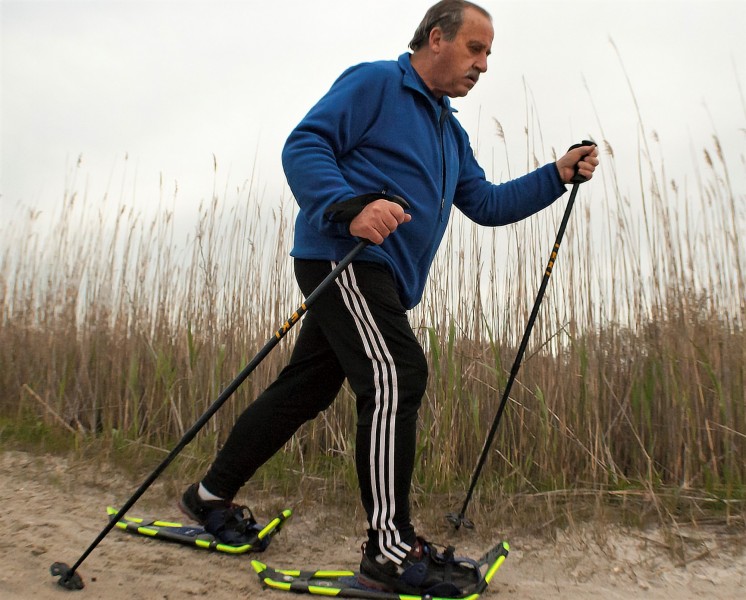
The author sandshoeing and using his ‘shoes and poles on the sand, getting ready for the WWF Nature 5K. Photo: Bob Young
Sandshoeing a 5K
Recently in Snowshoe Magazine, I was intrigued while reading an article about sandshoeing. We have hundreds of miles of beach here on Long Island. So I purchased a pair of Crescent Moon snowshoes for my wife and laid out plans to start sandshoeing the beach when I received an email about the WWF’s (World Wildlife Fund) 5K Fundraiser for Nature.
I thought, “Why not do the 5K on sandshoes?“ What a great way to promote snowshoeing while raising money to preserve the same nature that is the backdrop of our sport.
And so the idea was born. I reached out to Snowshoe Magazine, and they graciously agreed to help out by publishing this short piece. The 5K took place on the west end of Jones Beach State Park, the week of June 1-7. We used a sand road that cuts through the dunes not to disturb any wildlife. Then, we headed on to the beach.
Just the other day, while scouting the route, I was fortunate to see a pair of American Oystercatchers nesting on the shoreline. I have lived on Long Island for sixty-two years and never seen one.
We hope that this event can give snowshoers an opportunity to support a worthy cause while promoting snowshoeing to our Long Island friends. Plus, we get great workout training for this event. Our goal is a modest $5,000.
So if you would like to make a tax-deductible contribution to our 5K Sandshoeing for Nature fundraiser for the World Wildlife Fund (WWF), please click this link:
https://support.worldwildlife.org/site/TR/Virtual/Panda-Nation?px=17153603&pg=personal&fr_id=2182
We thank everyone in advance who wishes to help out.
Fundraising will continue through the end of the month. However, on June 4th, 2021, we completed the official WWF 5k. Since we have been training almost daily at 4 miles, the cutback in the distance made it literally “just a walk in the park”. Every day I keep learning more about what we are doing.
Lessons Learned from Sandshoeing
1. Sand conditions and the weather are major factors. With over 60 miles of sandshoe experience, I can now talk about it. Weather and the tides are major factors contributing to the sand conditions. The sand can be shifting and loose in the dunes. In these conditions, you’ll require the use of poles to keep you straight and moving if you are trying to make any time. Sand closer to the water can be hard or sticky depending on the surf and tides. The conditions are not homogeneous.
2. I have found that the EVA snowshoes are preferable to aluminum snowshoes on the sand. The compressed foam gives a huge advantage when crossing water and tidal pools. A negative to crossing water when sandshoeing is that sand will collect on top of your equipment when the water runs off. It hasn’t affected my performance in any way yet.
Also, the aluminum ones will scratch easily. I don’t have as much faith in their endurance over the hundreds of miles that I expect to sandshoe this year. On the other hand, the EVA snowshoes show absolutely no wear and tear so far.
3. The type of footwear could be a big factor in sandshoeing. Boots, sneakers, trail shoes, surfing booties, and sandals all offer different experiences.
As the weather is warming, I have been using Teva sandals. It allows for the feet to stay cool while working up a sweat when pushing the clock. They maintain almost no water and dry quickly.
When using them with the EVAs, a very firm binding combination comes together with all the straps that keep your feet in a comfortable moving position throughout your trek with almost no adjustments.
4. Lastly the trekking poles are a factor in the sand. I like the ones with a bit of spring and give in them over the sturdy firm ones. I did not even think it would be a factor because I thought all poles were basically the same. However, I had to use my wife’s poles the other day because one of mine faulted out. It was a noticeable difference when going through loose giving sand, where shifting my weight was necessary.
So far, the sandshoe experience has been a positive low impact exercise regimen for my wife and me. I like it a lot. But as the weather gets hotter, some adjustments will be needed to deal with the heat.
Overall, I am glad to be part of the snowshoeing and sandshoeing experience.
Best,
Alexandria and Bob
Merrick, NY
Jonesbeach5kfornature@gmail.com
Have you or are you participating in the WWF 5K? What are your experiences? Also, would you sandshoe the event? Please let us know your thoughts in the comments below.
Read Next: The Sandshoeing Days of Summer

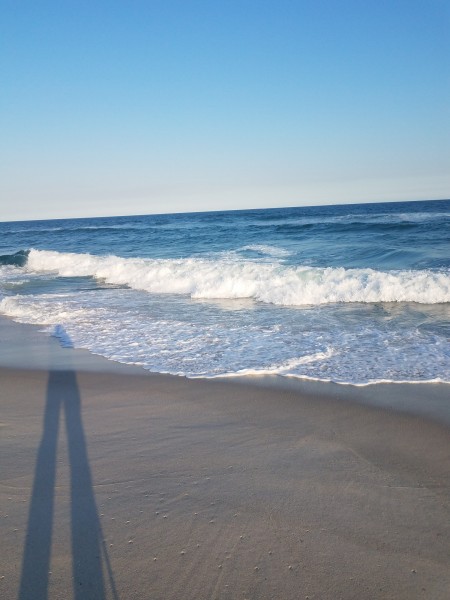
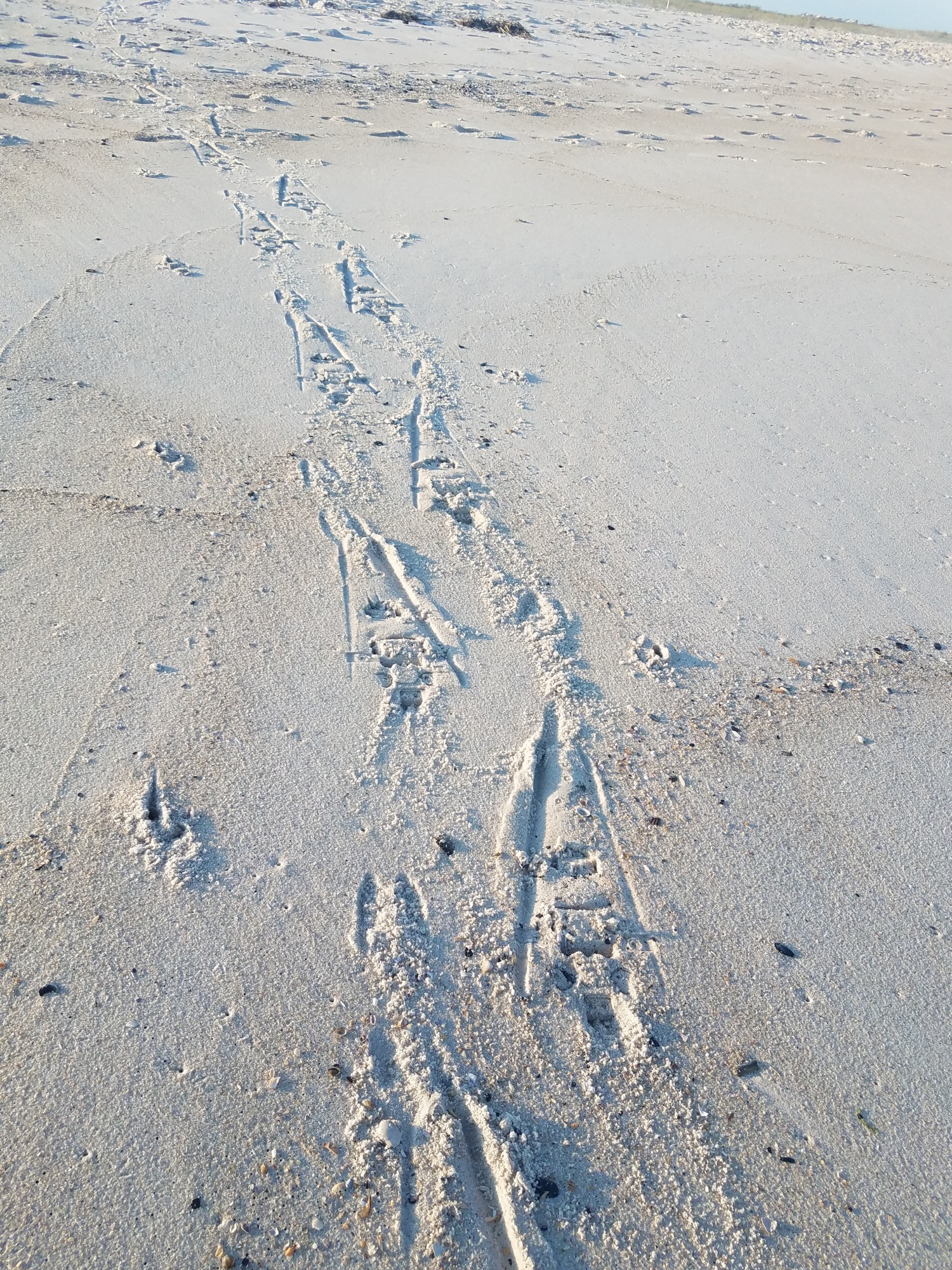
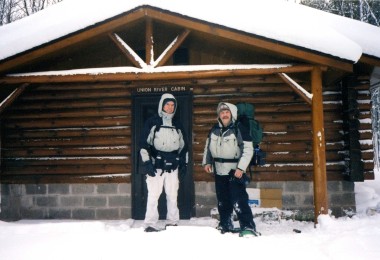
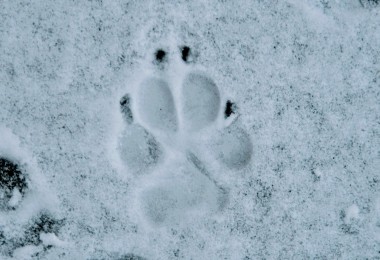
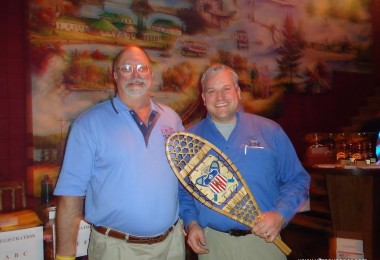
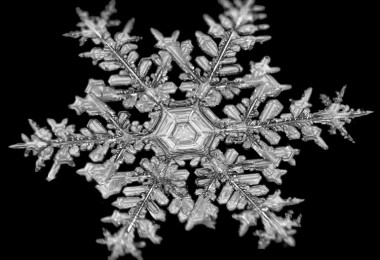

Hello friends ,
I have been trying to get up the energy to write this for a few days. Been super busy with another demanding work project and then getting out to train for the 5K when I get home.
I have some good news and some observations about sandshoeing .I have finally got my wife Alexandria out to train with me for the past three days. She is doing fantastic and yesterday we did a bit over two miles yesterday on the hardest part of our course. (Picture attached) The additional mile we need will be over harder sand, so as far as I am concerned …we got this! That is the good news.
Having done over 10 miles of training I would like to offer my personal observations. Sandshoeing is much harder than snowshoeing when using aluminum shoes. I am aching in places I haven’t felt pain in for a number of years. My feet shift as the straps loosen. Making the straps tighter only puts more stress on them and I already blew a back strap on my Crescent Moon Gold racing shoes. The sand not only scrapes the paint off the bottoms of the aluminum frames, but wears on any exposed straps that sink into the soft fine white sand. I am destroying these beautiful running snowshoes by using them for this project. If only using aluminum on occasion, it is probably OK just for the experience, but I would certainly not recommend it. Using garden hose to wrap the exposed parts of the frame keeps the paint from wearing, but does little to protect the straps.
On a positive note, my wife has been using the Crescent Moon EVA foam shoes and has a different experience to report. Where I sink a bit in the soft sand, she easily glides over it without complaint. Getting the right ones for shoe sizing is very important. The pair she is using forces her feet into a less comfortable position. The straps are too big when fitted onto the foot and need to be tucked in. Otherwise, it is not too bad. We decided to get another pair for her that would fit better and we were lucky enough to find them. They are on the UPS truck and are being delivered today. I am going to take hers to use going forward for tonight’s training and onward until the next snowfall. It is fantastic exercise. I have lost five pounds and am eating more than usual. I am also fully hydrated which actually adds more weight. Look for my next report on the EVA.
On the beach, we have been able to identify more species of wildlife. We have seen another pair of North American Oystercatchers hanging out with the first pair we observed. Thirty years ago, you were considered fortunate just to see a Piping Plover and we observed over fifty of them feeding on the ocean shoreline. We also observed a few Red Winged Blackbirds in the dune foliage. We also have to be careful and pay attention because there are moderate sized frogs that are camouflaged into the sand with the same color. We have to be careful not to step on them. (Picture attached)
Also I am including a picture of the only windmill on the south shore of Nassau County where we live. You can actually see the Manhattan Skyline and the Freedom Tower from the jetty where Alexandria is standing . I really need a good camera to show those views.
The sad part of observing that landscape from where we are sandshoeing, is how badly the environment was destroyed by multiple landfills, incinerators, and oil burning power plants right at the shores edge. While most of them have been closed, the environmental damage is in the soil and in the water. Jones Beach is actually an artificially created beach created about one hundred years ago and is south of Long Island’s shoreline with the Great South Bay separating them.
So that is all for now. Look for my next report. Again, thank you and Snowshoe magazine for your support.
Thank you so much for sharing an update of your sandshoeing adventures, Bob! We’re glad to hear that the Evas are working well, and we greatly appreciate your insight about your aluminum model (though unfortunate for the wear and tear). We hope that the fundraising efforts for the Nature 5K have been going well. 🙂 -Susan